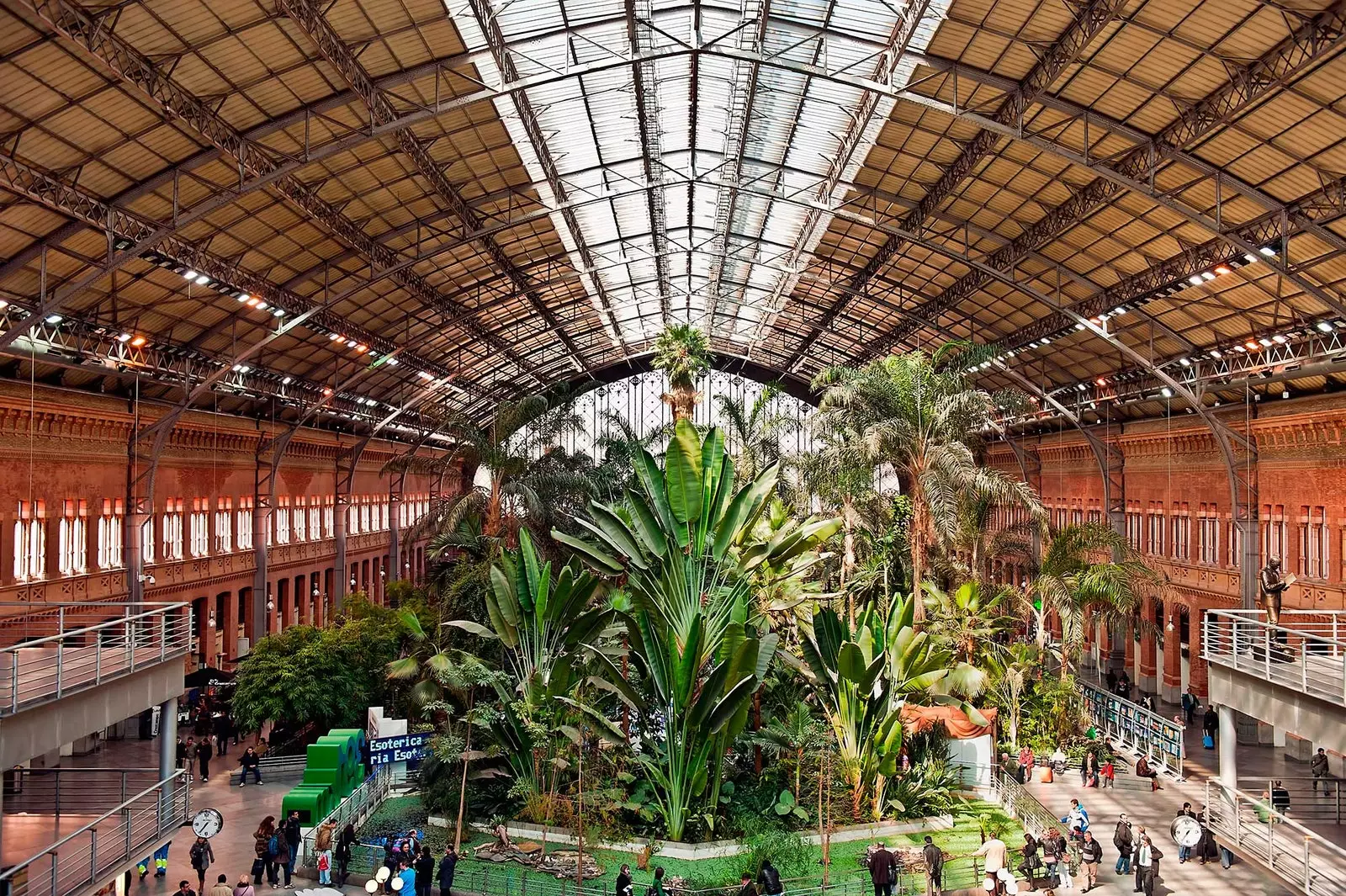
The great jungle of Atocha
We can divide the places of a city between those that we visit calmly and those who see in a hurry . In Madrid we would have something like this: ** el Prado , calm down ** ; T4, relative rush; Gran Vía, slow rush; Atocha, the rush of the rush.
If we always go to an airport with a waiting period, we came running to a station , like characters in a movie that are mounted with the train running. This, Atocha, does not deserve it; neither the station nor the neighborhood.
This, then, is an act of relief to an area of Madrid where there is always someone with a kiss ready waiting for someone else, where you arrive early in the morning and late at night, sad and happy, with hope and without it. We owe Atocha, at least, an apology for passing by without stopping.
Atocha is more than Atocha . This area is self-sufficient and deserves a visit without a suitcase and without rushing. In it there are places to sleep, walk, eat, buy, heritage and oddities. Let's see some of them.
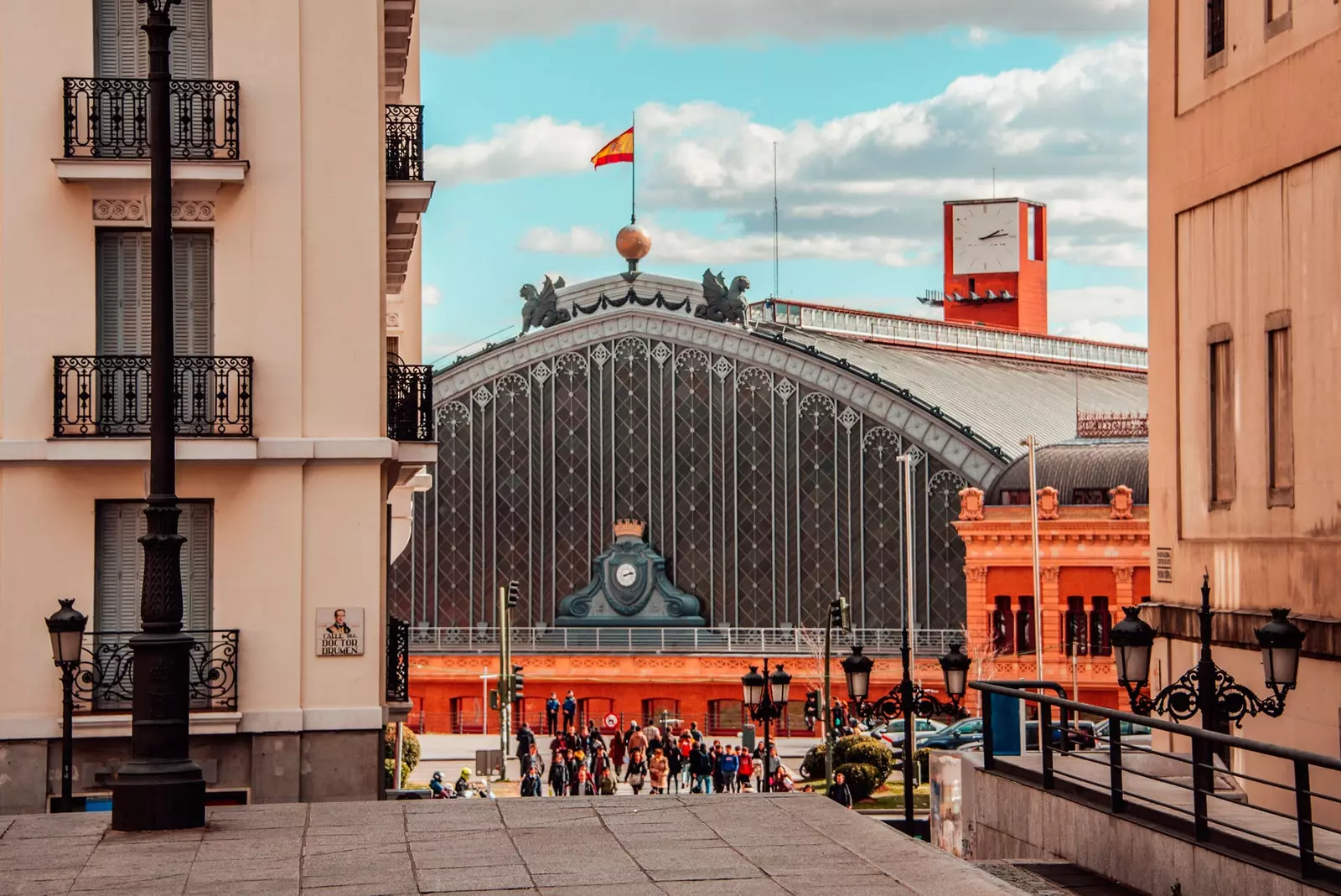
Get to know Atocha without haste or suitcases
The Atocha Station it is the first and the last thing that people who use the train to get to Madrid see. First impressions are important. The last ones too. There is nothing to blame Atocha for, one of the most beautiful stations in Spain.
It has been standing since 1851 , when it was born as a pier for the Madrid-Aranjuez line. In 1888, Albert of the Palace (architect) and Henri de Saint-James (engineer) carried out the project of what would be a full-fledged station. It opened in 1892 as Midday Station , as anyone who has played the monopoly.
In 1992 the AVE arrived and it had to be adapted to prosperous Spain. Moneo was in charge of this rehabilitation that gave Atocha the form we know; in 2010 the architect retouched it again to increase the capacity of platforms and join two buildings.
Currently, Atocha is part of a architectural and urban macroproject announced a year ago; the idea of the new Atocha, of which Moneo will be technical advisor, is that it not only continues to expand, but that it integrates into its neighborhoods and into the city. Importance will be restored to the main façade of iron, brick, ceramics and stone and a new square will be opened.
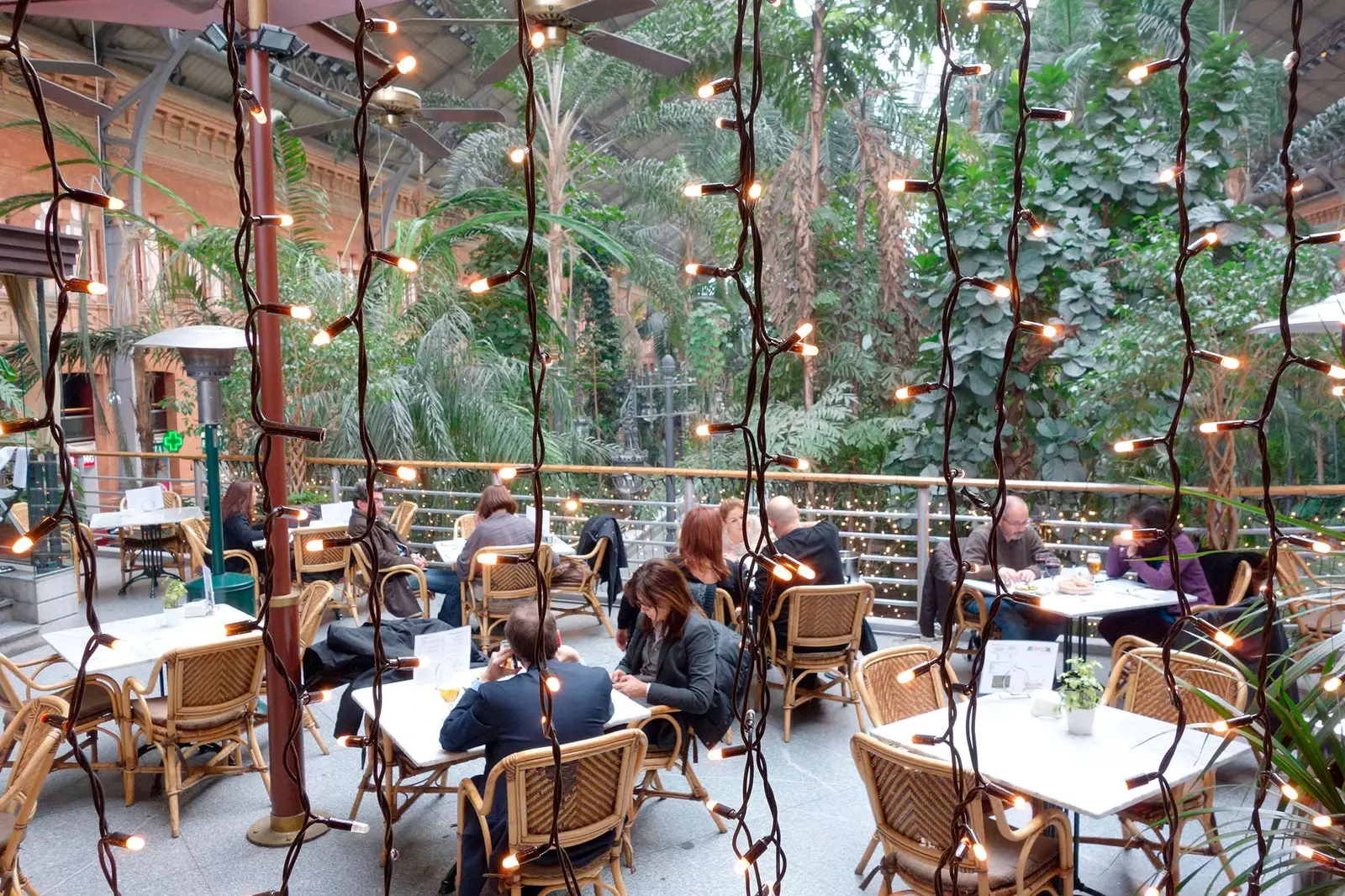
Let's visit with time an area to which we always go without it
The future is fine, but the present is easier. Today there is much to see in this area, one of the most diverse and unpredictable in the city . Let's try going to the station on a day when we don't have to catch a train or go to meet someone on time.
There we find a tropical garden which makes us believe that we are in Jakarta. No matter how many times we take the AVE, we will always like to go in and meet those palm trees and that tropical atmosphere . This vision begins the journey and is often more exotic than the destination.
Let's take the opportunity to walk among the thousands of plants (7ooo?) and more than 200 plant species. We can search for turtles that have been in the pond for decades, but we will not find them because they were transferred in 2018 to the José Peña Fauna Center in Navas del Rey. There they will be better than in a pond that was not prepared for fauna, but for flora.
Let's get out of the building and let's look at the clock: it's the biggest in the city . Let's continue walking around the station: the two heads that can be seen in the arrivals terminal are two sculptures by Antonio López: "Day and Night" and represent their granddaughter , when he was a baby. she asleep and awake. We can unite it, with an invisible thread, with the other great girl from Madrid, the sculpture "Julia" by Columbus. A city with girls is a good city.
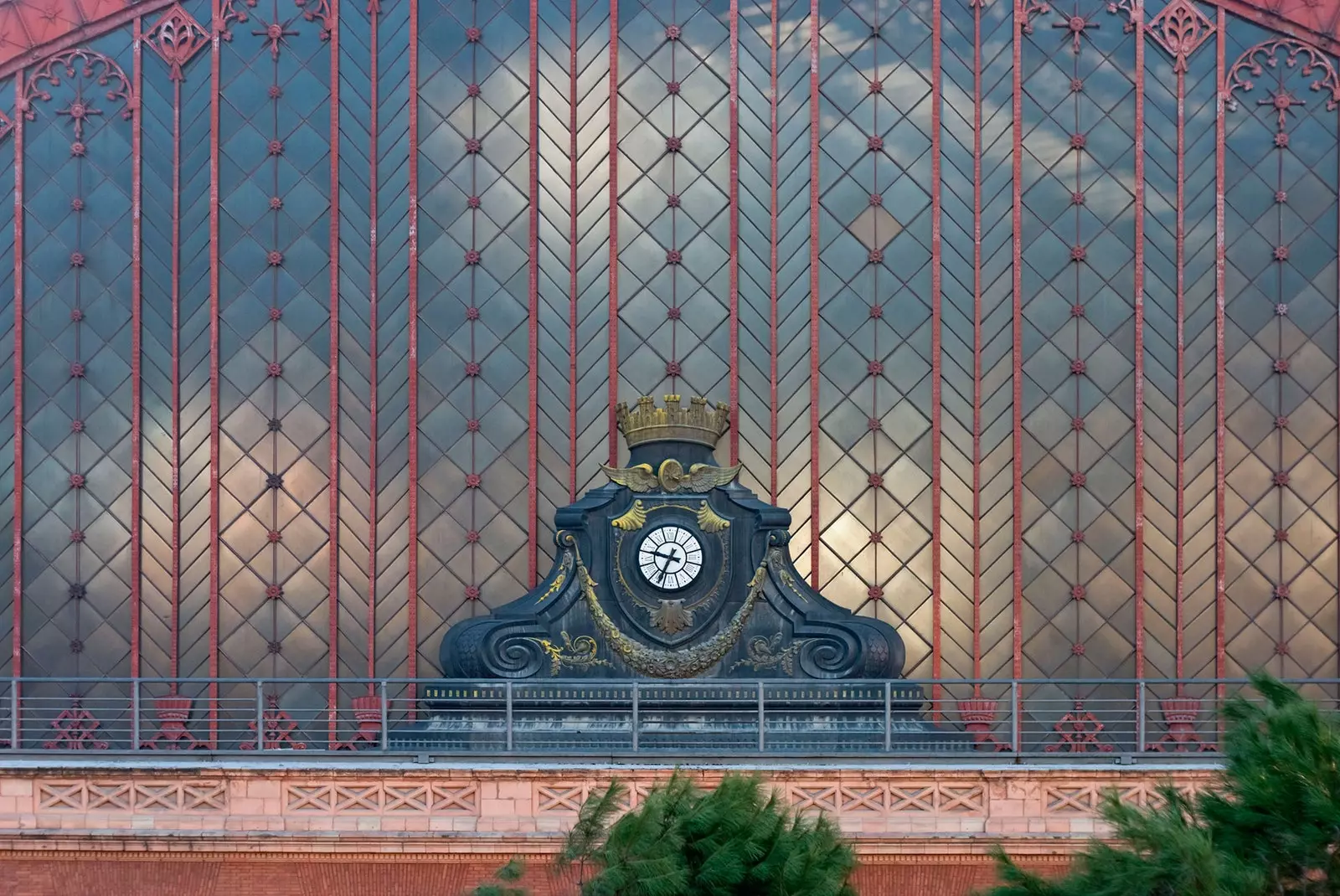
The Atocha clock, the largest in the city
Sleeping next to a station is always practical and not always attractive. The ** Only You Atocha ** was born in 2016 to blow up this idea. It is one of the most surprising hotels in Madrid; has achieved what many hotels pursue, communicate in their press releases, but do not achieve: be social.
The lobby functions as a square where gourmands mingle (here is installed Mama Framboise ), those who check-in, guests who get on and off, those who drink wine and read magazines, those who eat at ** Globetrotters ,** and even those who want to trim their beards, because there is also a barber shop. The rooms are modern, for all audiences and always comfortable.
The top floor hides one of those places to take someone who thinks they know Madrid very well. There, in the seventh , has been installed little angel , one of the best wine and cocktail bars in Madrid. The Angelita Madrid Sky Bar it opens at 7 in the afternoon and it is worth getting to see the sunset because the views from this place are unusual; seems even that the sea will appear in the background.
On Sundays there is brunch, one of the most complete in Madrid . It also has views. In any case, go out to the terrace and, if we get cold, we will resort to the checkered blankets that they offer us. This place puts us in contact with a Madrid that we don't always pay attention to.
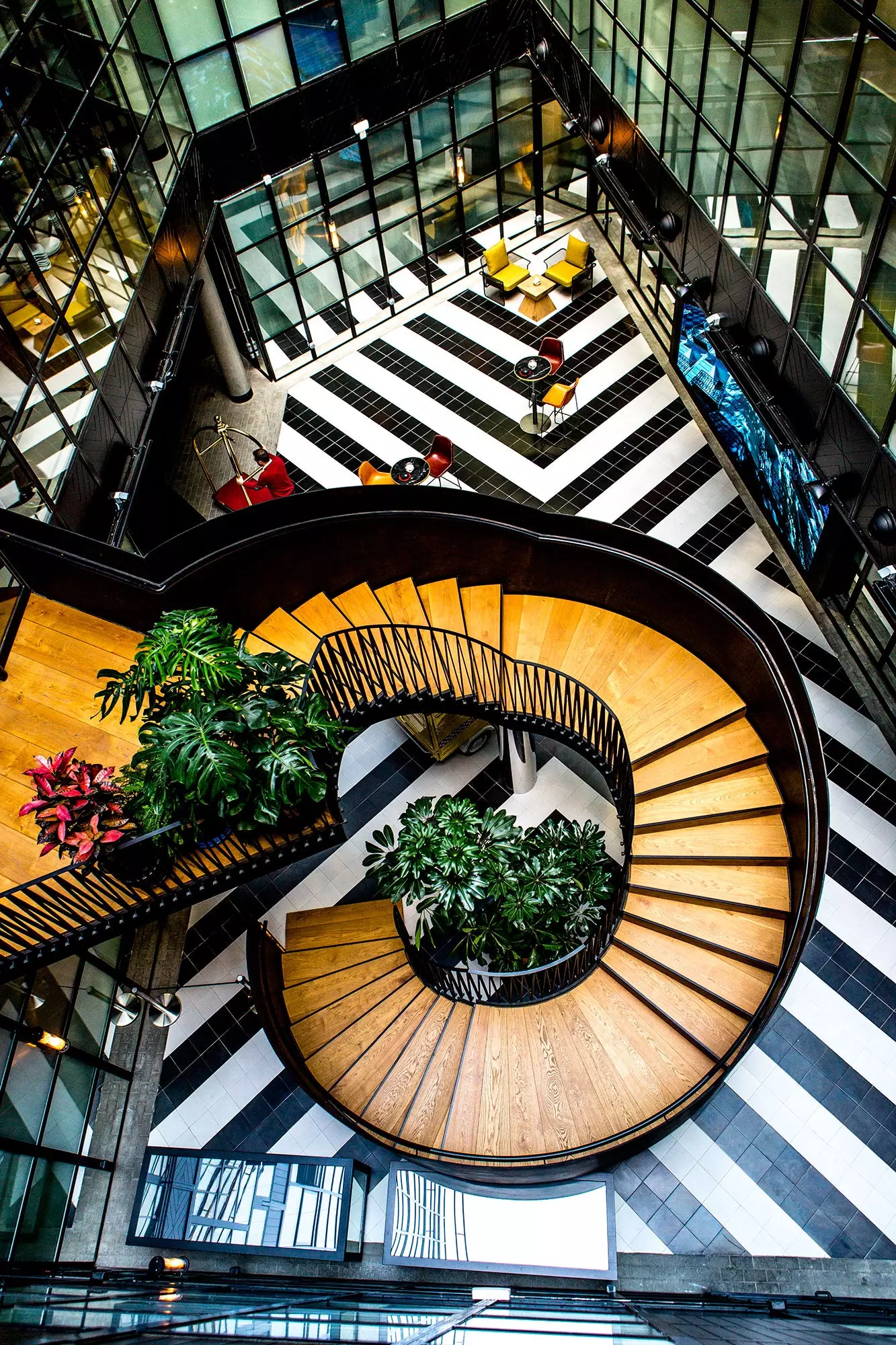
The wonderful stairs of Only You Atocha
Near the hotel, across the street, there are several interesting places. One is the Anthropology National Museum . It belongs to that lineage of museums that have little queue and also fewer resources than they should. In any case, have interest and willingness to perform their function in a city where the great museums overwhelm. A visit to this museum, full of curious pieces such as the 'Extreme Giant' , reveals a little more about ourselves and our fellow men.
Another place worth visiting is the Pantheon of Illustrious Men , a curious example of historicist and funerary architecture. It is a building with a neo-Byzantine air from the end of the 19th century, built by Fernando Arbós. There are buried politicians like Cánovas del Castillo, Eduardo Dato, Mateo Sagasta or Ríos Rosas . It is inspired by the cemetery of the Pisa Duomo , hence that air that breaks with the aesthetics of the area.
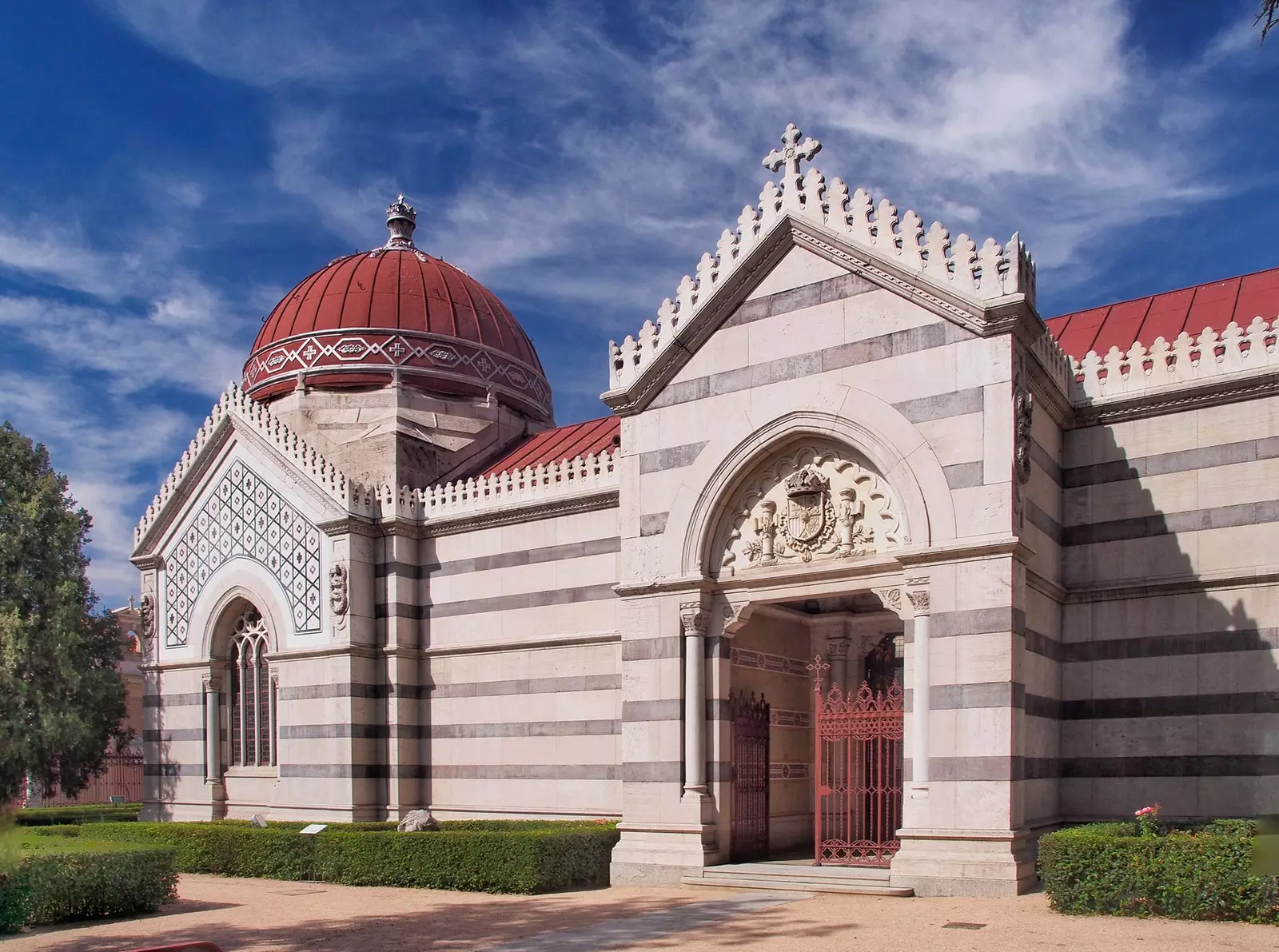
Pantheon of Illustrious Men
Better known is the Slope of Moyano , so out of fashion and, therefore, always in fashion. Let's begin to walk through its highest section, where the statue of Pio Baroja , walker in the area. The thirty used book stands have been here since 1925 and are as Madrid-like as Guernica, which, by the way, is a few steps away, in the Queen .
It is always good to stand in front of the 776 centimeters that Picasso painted to denounce the brutality of the War. A complete visit to Atocha involves looking at it again.
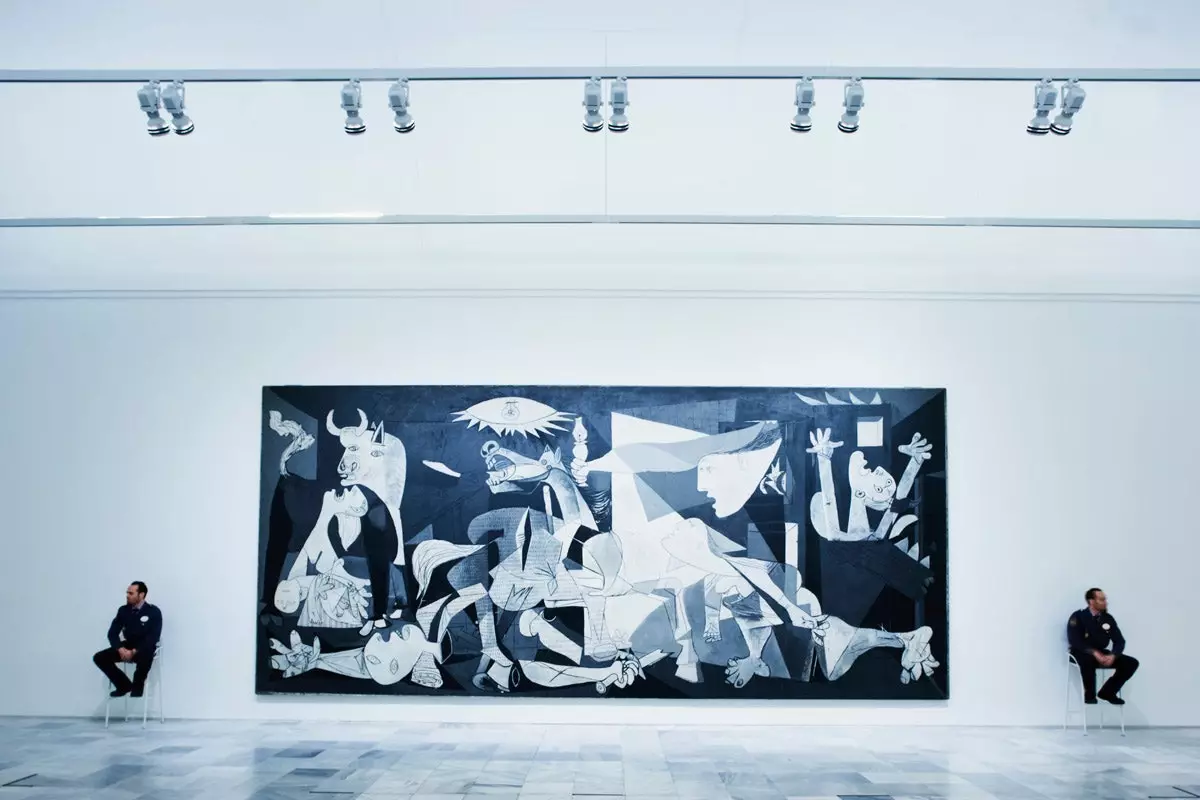
The Guernica (Picasso). Reina Sofía National Art Center Museum.
Once we have done that, let's move on to more prosaic tasks:
We will make the purchase at the La Central bookstore, which is right in the square where the 'Brushstroke' from Liechtenstein. There we can spend a lot of time strolling among books on art, design, essay, illustration, fashion, narrative... Even if we don't buy, it will be a nourishing walk.
To feed ourselves physiologically we will go to NuBel . This imposing looking restaurant is situated in the courtyard of the building designed by Jean Nouvelle and has an interior design of Paula Rosales.
Food from different cultures is served there, as an invitation to museum visitors and a nod to the neighboring neighborhood of Lavapiés. In Nubel you can eat from a bibimbap to an Iberian sirloin, going through tacos, bums or gildas.
He just changed his chef, now he will be Manuel Berganza , from Singapore and NY, where he achieved a Michelin star with broadside . In Nubel you can have breakfast, lunch, brunch and dinner. Perhaps the most advisable thing is to go at night for the decoration, the lighting and the feeling of being, not only eating, but living the Madrid nightlife.
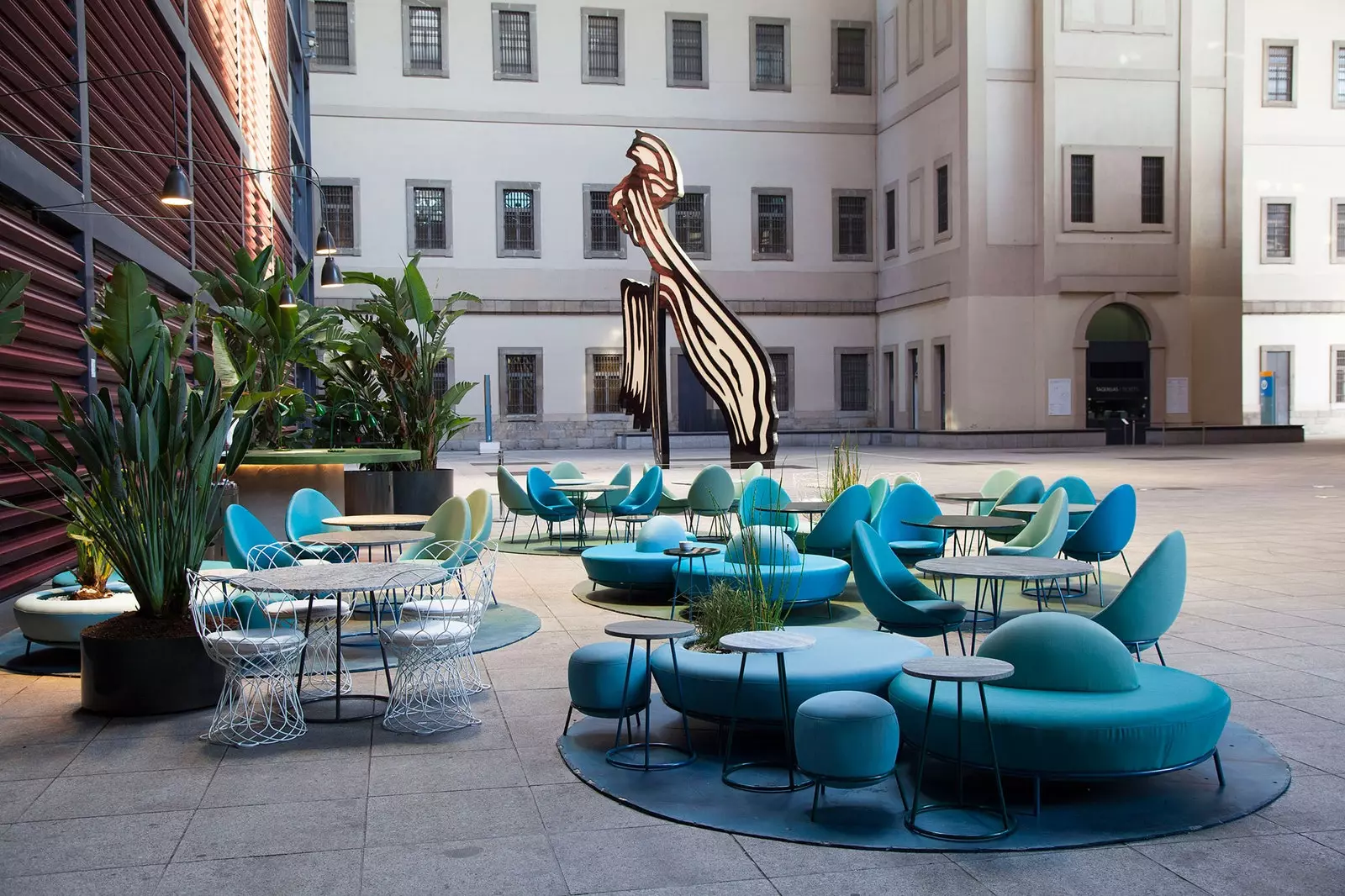
NuBel Terrace
At the exit, at whatever time it is, we can look at the station again, the main façade. If we are lucid we will realize that it has no door and is diagonal and sunken in relation to the Charles V square
It's normal: trains neither climb hills nor turn corners. For details like this, so unexpected, and for much more, It is worth coming to Atocha calmly and without trains to catch.
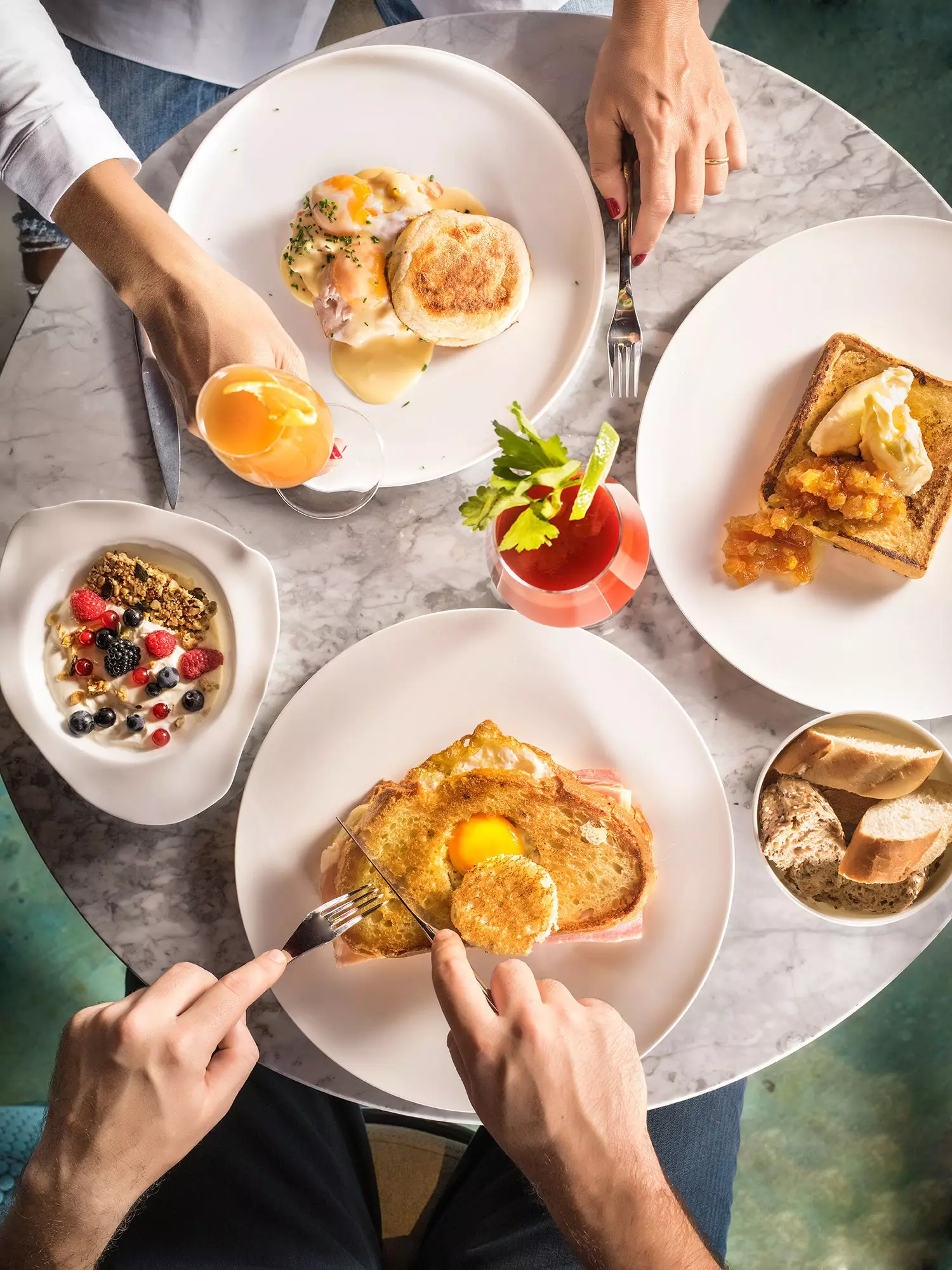
Brunch at NuBel
